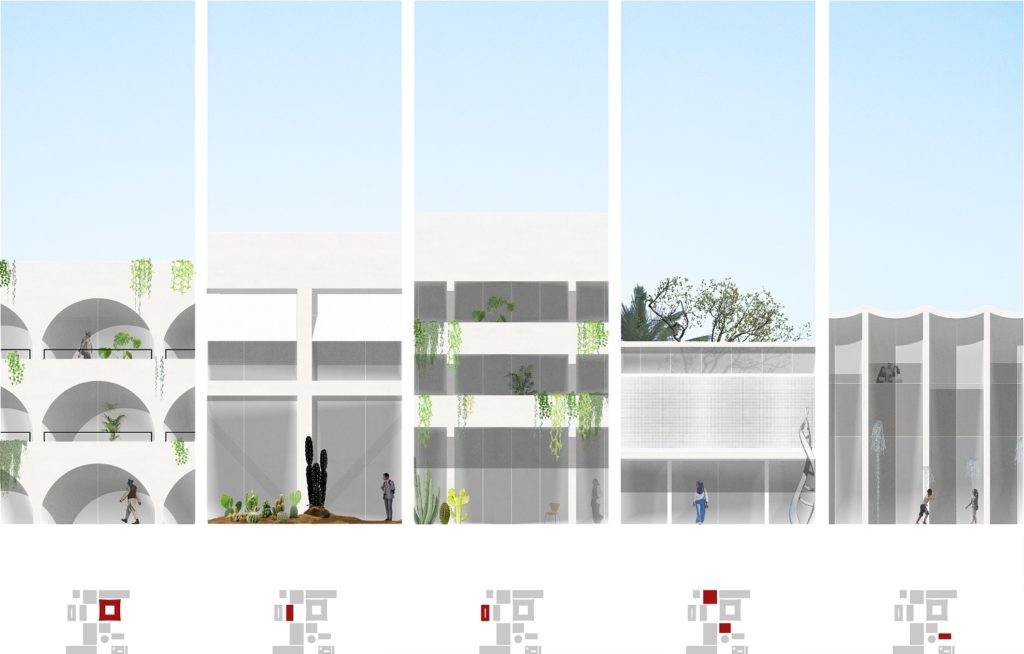The science city
is a masterplan for a new science campus in 6th of October city in Giza Governorate, a satellite town and part of the urban area of Cairo, Egypt.
In collaboration with Andreas Karavanas, we handed in a proposal that is a contemporary interpretation of Egypt’s rich tradition in vernacular building techniques and architectural form.
Programme and Representation
Throughout history, architects have longed to devise new ideas for the perfect spatial representation of knowledge work. The Library of Alexandria considered the first model for the modern campus formed the place where humans could interact with one another by exploring the inner self while gaining and producing knowledge. Such explorations were resulting in what we would today call Art or Science. The organization of the library played a major role in reinforcing this unending journey of discovery. It was formed as an accumulation of rooms, a collection of scrolls, Greek columns, a “peripatos” walk, a room for shared dining, a reading room, meeting rooms, lecture halls, an acquisitions department and gardens.
Since then, the production of Knowledge has engineered progress, but this need for discovery remains unaltered at the root of humanity. Since the beginning of the twenty-first century, the emergence of new circumstances, shifting values have transformed the way we work, live and explore. The public and private, collective and individual, concepts that have been clearly distinguishable in the past, meld together, challenging the relationship between private workplace and the public sphere. Inter-connectedness on a new global scale requires workers to perform within a multitude of diverse cultural atmospheres. New work environments exist in egalitarian, multi-use agglomerations that integrate working, cultural activities, and leisure, which are interdependent and closely linked to the larger context of the city.
In the Science city design, we are looking for a new kind of a common space, a space that provides an architectural environment, which fosters thinking and imagination.

Form
Form means the abstraction of the city or architecture, as a whole or as the configuration of its components. The definition of its boundaries and scales belongs to its abstraction. The concept of cohesive form is throughout the history exemplified, especially in large urban projects. Such projects were also the Palaces in Ancient Egypt.
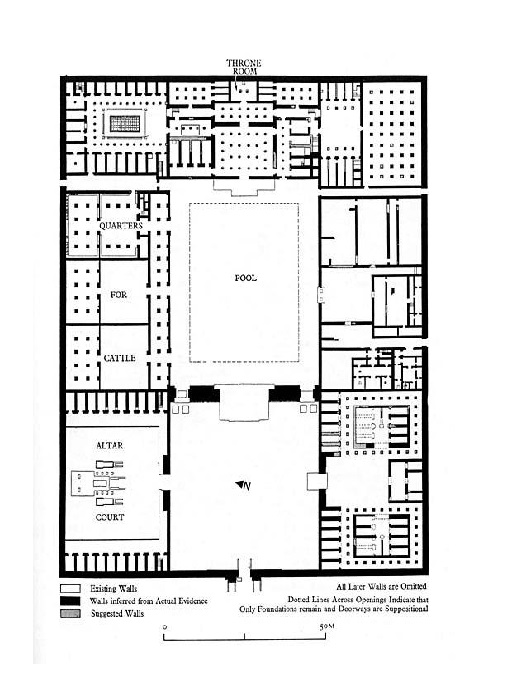
Palaces in Ancient Egypt were the residences of the pharaohs and their entourage. They consisted of a complex of buildings designed to house the headquarters of power and the temples for worshipping the gods. There were two main sections, one to accommodate the needs of the pharaoh and the other to meet administration requirements.
Palaces took on a distinctive architectural form around the end of the fourth millennium B.C., which was repeated for most of the third millennium. They were essentially rectangular structures consisting of high walls topped with towers. The tops of the towers were often decorated with a rich cornice or panels. The palaces consisted of a composition of rooms. Rooms to accommodate the needs of the pharaohs. Government buildings, lakes, and gardens were also added to these complexes, creating magnificent residences for Egypt’s kings.
The perimeter of these structures was clearly defined by a surrounding wall where the openings marked the entry places.
We imagine a project that can combine a single entity with identifiable boundaries – the coherent civic form – with new concepts about hybrid programmes and mixed cultural, working activities.
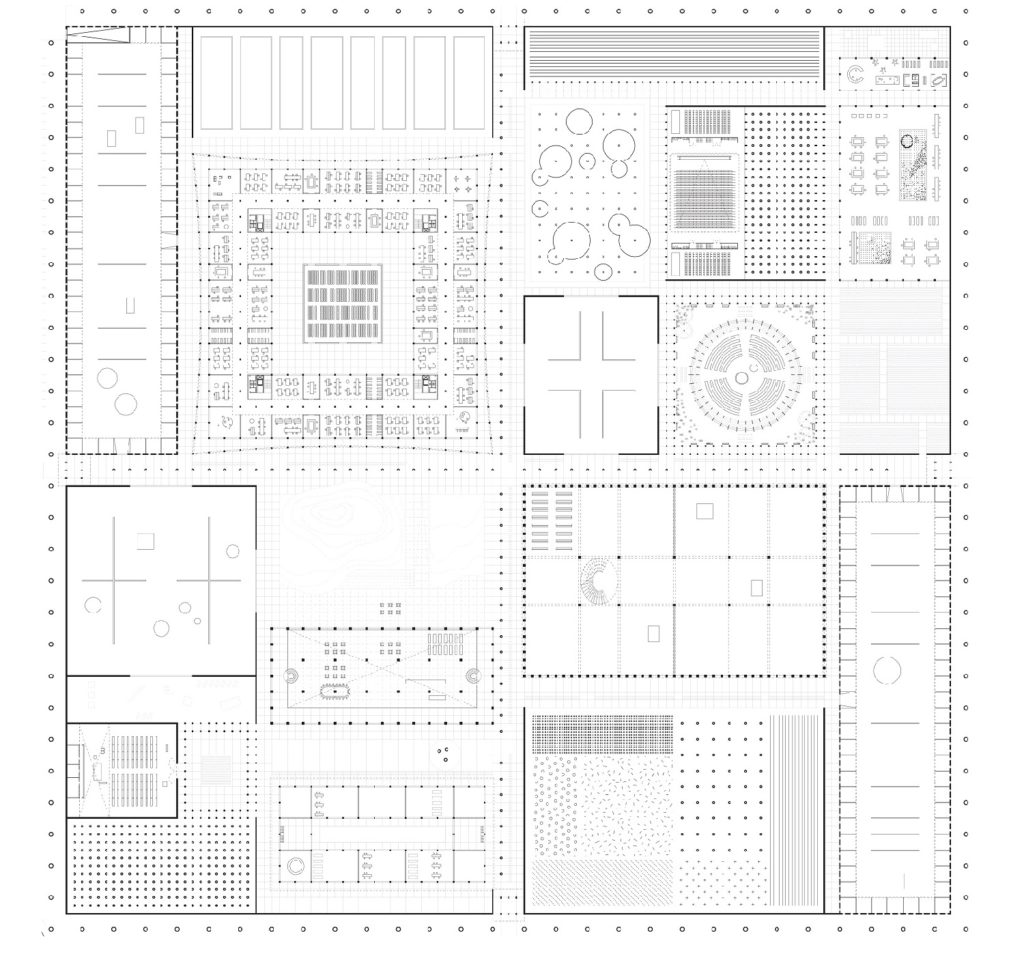

Landscape
Ancient Egypt is considered one of the first countries where the skill of creating gardens and parks arose. Amenhotep’s tomb’s painting presents a complete plan of the villa, mostly as a bird ’s-eye view.
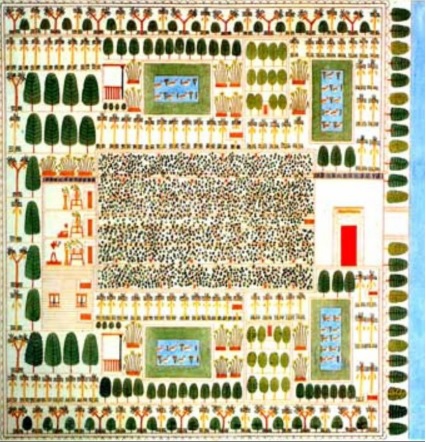
The whole upper garden is intersected in symmetrical lines by avenues of sycomores and different palm trees. A feeling for strict symmetry is shown. The garden is carved out by walls into eight separate similar parts, only differing in their size. The chief section (with the house) includes the vineyard. Besides avenues, it has two small and attractive open pavilions with flower-beds in front. They overlook two rectangular ponds, whose banks appear to be bordered with green grass. On the water, lotuses are swaying, and ducks were swimming about. Two similar ponds, but pointing in a different direction, are nearer the front. A space filled by two plantations of trees on either side of the gate fenced peculiarly. There are two more avenues composed of all three kinds of trees, planted alongside the walls, standing alone and cut off by a low wall: rhythm, symmetry, and a combination of elegance and utility. The doors were the only break in the façade.
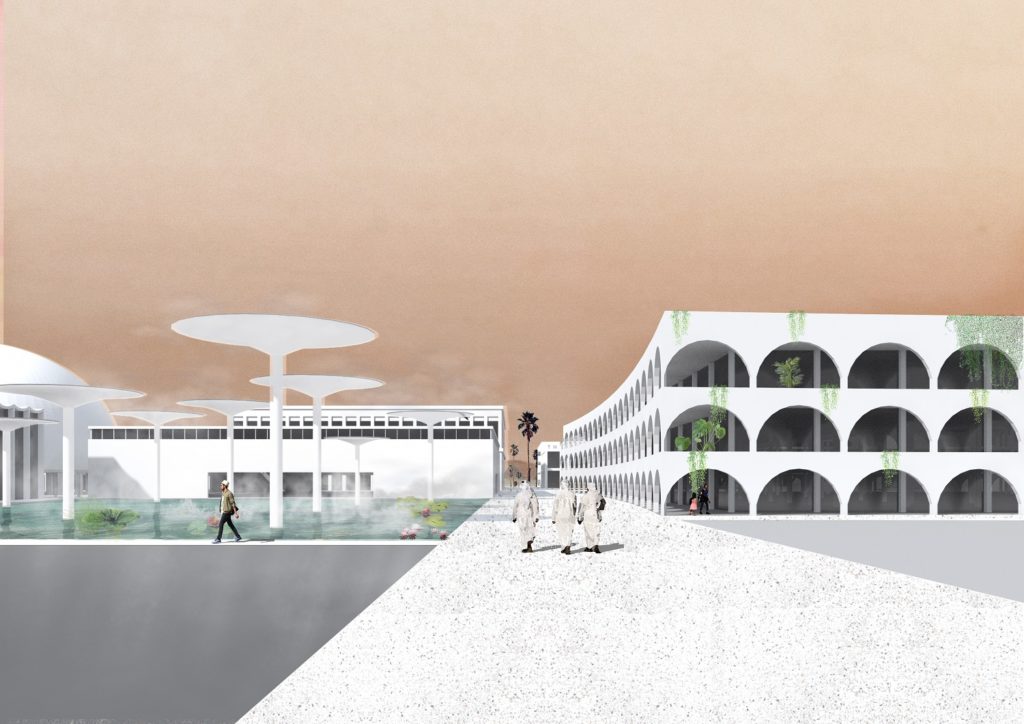
In ancient Egypt, the gardens were designed using the following principles:
- The use of symmetry for a regular plan
- The closed compositions
- The centre of ensemble is always the main house, situated among a large number of the ponds.
- Rhythm as the composition method
- Alleys and series of plants
The story of science: a frame story
Like the well-known collection of Arabic folk tales, ‘1000 and one night’s, the new science campus concept can be seen as a frame story. Each of the thematic buildings and gardens can tell a story of their own. These separate entities, however, find themselves within the framework of the science-city. Within this framework, connections can be made, providing a broader view and possibly leading to new insights.
Figure plan
The old and Traditional areas in the Arab world cities are characterised by their complex urban fabric, which resulted in a cumulative process of activities over time. The Islamic historic town was a compact labyrinth of houses, public buildings and courtyards.
The project represents a living matrix with an unusual pattern of non-hierarchical rooms. The superimposed grid is such a rigorous ordering system that each plot itself can manifest a unique identity without destroying the gridded city’s conceptual coherence.
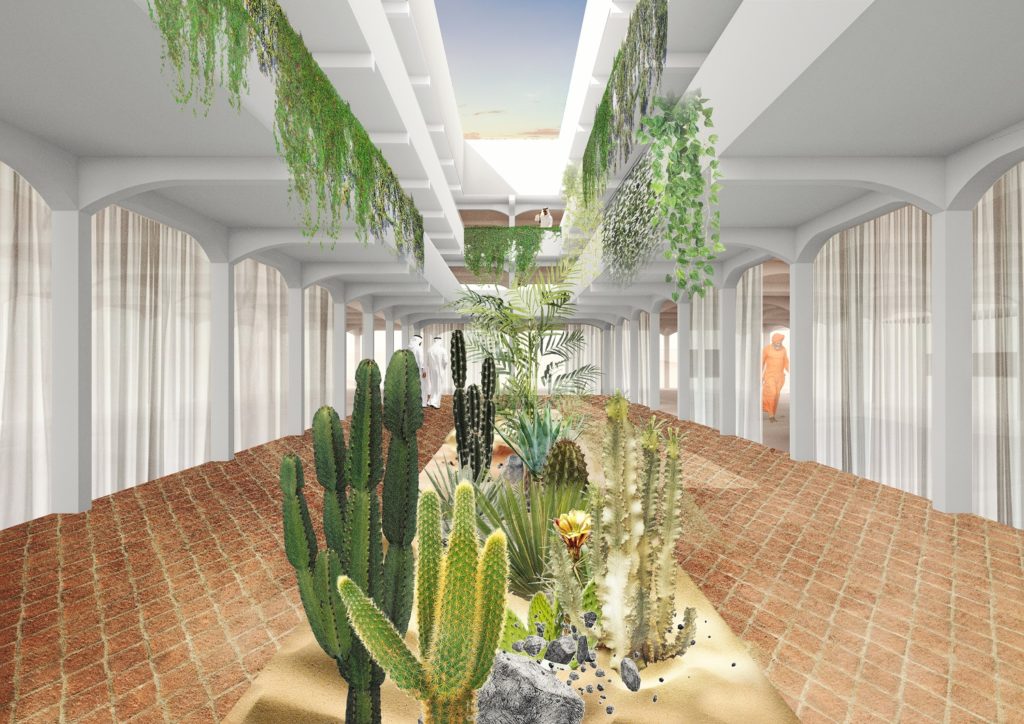
The rooms vary in size. They offer different conditions and dimensions: An enclosed garden, an exhibition hall, a forest of palm trees. This set of spaces is open to the public and deliberately monumental. As in a Roman Forum, the external wall allows for the easy incorporation of subsidiary elements with different programs and the insertion of many exceptions that provide the rooms with a lively atmosphere. The ground floor is the meeting point where the spaces of the upper floors meet. It represents an urban lobby for interaction.
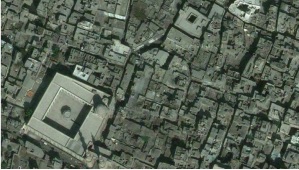
Street fabric
The project offers a highly-hearted community space which the people and the activities activate. Like the pathways in a medieval city or even in a park, we offer a network of prepared internal and external passages of several kinds, dimensions and efficiencies. People can freely select and explore their own experience. At the same time, different people are free to enjoy this site in different hours with other purposes. In this way, a complete network of public spaces is organised. The nature of this network makes possible various path choices between the multiple alignments of the spaces.
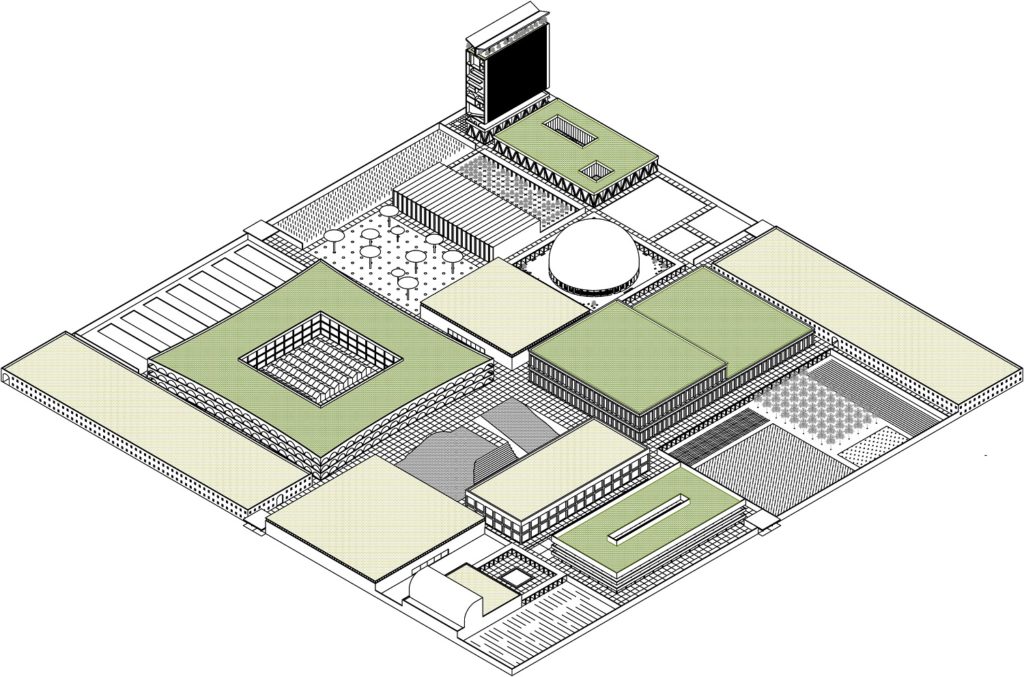
Programme
The Egyptian landscape consists of a number of conditions that are so qualitatively different that they can be understood as autonomous ecologies. The two ecologies defined life in ancient Egypt – the Arable Land, consisting of Upper and Lower Egypt(the valley and the delta) and the Dessert. It is necessary to add Cairo and the coastal zones to understand contemporary Egypt.
The Egyptian landscape today can be categorised in natural and human-made. Where natural are elements very much connected to Egypt’s history such as the water, the desert and the palm forests whereas as human-made can be understood as all the improvements that Egyptian technology has achieved such as the agricultural farms in the desert.
The proposed Science Park consists of an accumulation of different open spaces where a different landscape programme catalogue occurs. It is designed with nature and technology as two ends of the spectrum of human experience and experimentation. The park with the different rooms consists of a landscape for discovery and imagination. It continuously alternates from a productive landscape or a water treatment basin to a natural palm forest
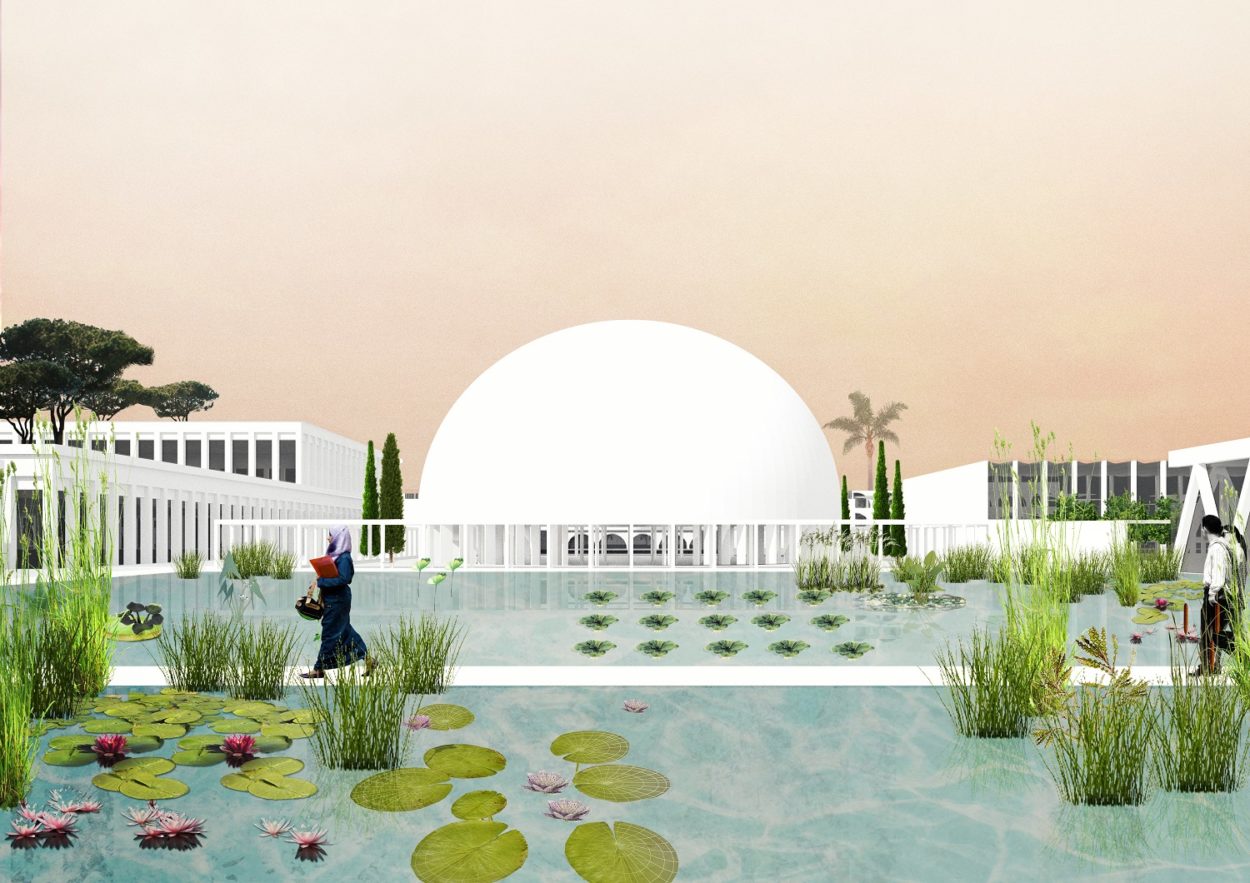
Architecture
Constellation of the landmarks
The proposed scheme carries the intensity of urban interaction of the project to each aspect of the specific buildings.

The organization of architecture becomes an important chance to invite many types of interaction and encounters. We believe that we could provide a lot of possibilities of architectural identities within a simple urban form. Each of the thematic buildings and gardens can tell a story of their own. These separate entities, however, find themselves within the framework of the science- city.
Arcade & Patio
Due to the climatic conditions, vernacular architecture in Egypt offers a lot of archetypical architectural solutions. The patio primarily serves the purpose of thermally regulating the building.
At night, the walls’ radiation causes a convection current, which removes hot air through the shaft. During the day, the building profits from the air’s freshness at the bottom of the patio, whose narrow aperture limits its exposure to the sun. There are a lot of examples that differ in shape or size according to specific conditions.
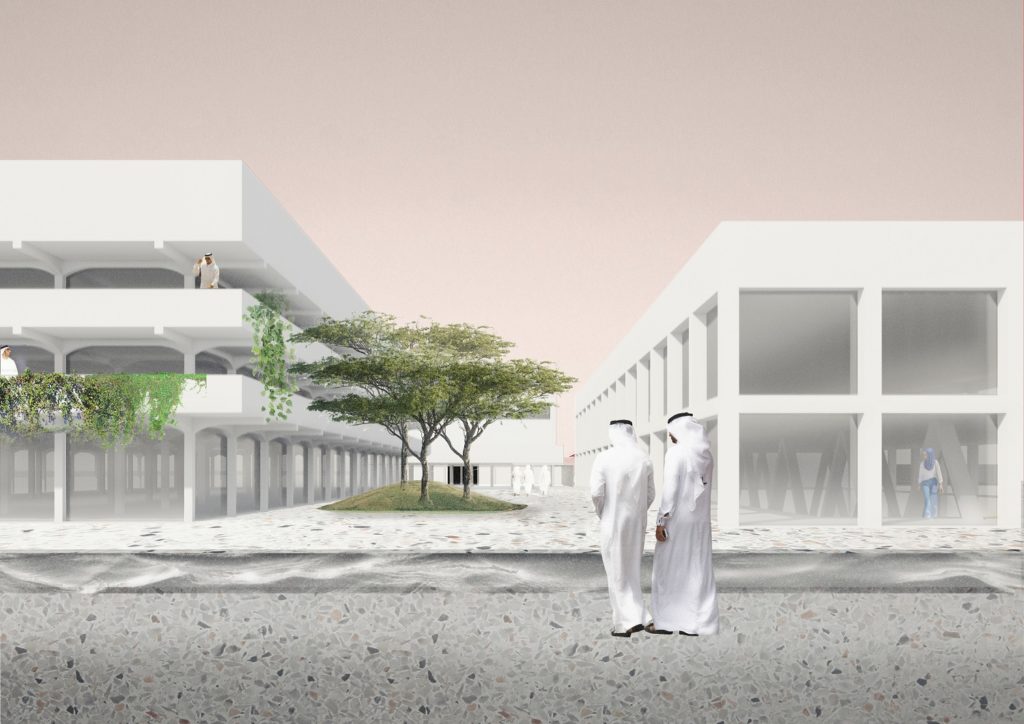
Arcades refer to a covered walkway enclosed by a line of such arches on one or both sides. In Egypt, exterior arcades provide shelter for pedestrians but also serve as a civic space for commerce.
In our proposal, both elements are reinterpreted and proposed according to specific conditions. We provide a rich catalogue of different types of patios and arcades.
White exterior vs Colourful interior
In Islamic architecture, the exterior facades due to the climatic conditions usually are characterised by the light colours to reflect the sun. On the contrary, the interior open or closed spaces are characterised by colourful geometric designs. Islamic decoration, which tends to avoid using figurative images, makes frequent use of geometric patterns developed over the centuries.
In our proposal, we adopt this idea by creating spaces where the room’s sequence is characterised and identified not only by the architecture but also by the different decorations and colours.
